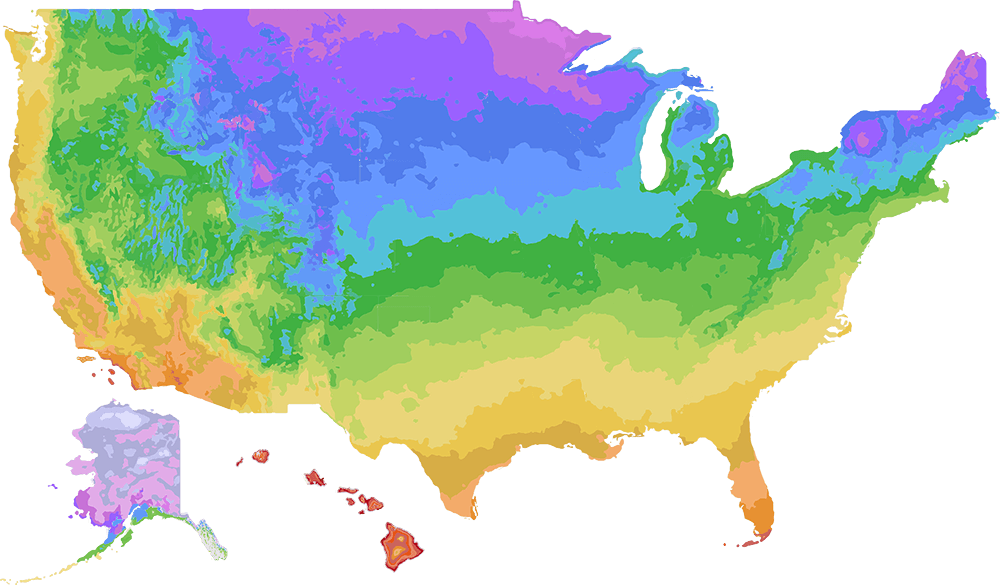Guide to Climate Resilient Gardening
Proper land stewardship starts with research. Given the importance and rising awareness of climate resilient gardening, we are working on building a wealth of knowledge on the topic on our website. Start here on your learning journey and remember to check back often as we expand this resource.

Arm Yourself with Knowledge
We are all gardening in more extreme environments. While plants are shifting and evolving, so must we adapt as gardeners. We must partner with nature and evolve in equal measure. The famous gardener, Beth Chatto, coined the phrase “right plant, right place” and in the history of gardening, even or especially today, it is the most resilient advice on which to rely.
As extreme weather hits us from California to Vermont, our favorite plants are shifting and changing at a slow rate—some much slower than meets demand. Some gardens that used to be satisfied with weekly watering are now requiring daily watering. Elm, oak and maple trees are now struggling to survive in some climates. Our native soils are less and less nutrient rich and raised beds with prescriptive soil mixes have become vital for home gardeners to reliably grow vegetables.
Our best hope is in your hands to recognize these changes and adapt as needed. Your garden is the bridge between you and nature, which will always stand as a reflection of change. Climate resilient gardening begins with you standing on that bridge and recognizing the necessary changes, meeting the challenges, and supporting nature with the right plants in the right places. People can change faster than plants and we must do our part.

Building a Biodiverse Plant Community
Proper land stewardship starts with research. Learning how to grow plants that have like needs and behaviors, or planting those that are adaptable or have already evolved to manage multiple climate changes, is fundamental. The native plant movement has brought better availability of native plants or plants with native heritage, but it is important to remember that many plants from around the world have already adapted to the changing climate.
Planting a diverse group of plants has great value in extending the bloom season in your landscape. It also provides shelter and habitat which in turn aides native birds and insects as they also struggle to adapt to the changes in their climate. Promoting biodiversity in plant material promotes more diverse insect and animal populations.

Resilient Plants Adapt to Changing Environmental Conditions
Having a climate resilient garden begins with selecting the right plants for the right places. The goal is to build a plant community that can adapt to the evolving environmental conditions of your land.
Knowing your growing zone and soil type is essential for being able to choose the right plants. Another important factor is understanding your climate’s ecoregion. Explore the types of plants that grow naturally in your area and model your plant selections after those parent plants.
Nativar Prairie Winds® ‘Cheyenne Sky’ switch grass (Panicum) (pictured above) can adapt to any soil type and withstands both drought and flooding.
Select plants that will naturally thrive in your soil type, growing zone and ecoregion. When you do, those plants will require less maintenance, water and fertilizer, and they will be less prone to failing during adverse weather conditions. Resilient plants save time and money in the long run.

Decadence® Deluxe ‘Pink Truffles’ false indigo (Baptisia) is a durable, drought tolerant nativar that will thrive in poor soils and live for decades.
Dig deeper:
Given the importance and rising awareness of climate resilient gardening, we are working on building a wealth of knowledge on the topic. Get started with the links below and remember to check back often as we expand this resource.
- Article: Right Plant, Right Place
- Resource: Top Plants for Your Climate
- List: Fire-Resistant Plants
- Book: Planting in a Post-Wild World: Designing Plant Communities for Resilient Landscapes by T. Rainer and C. West, 2015.
- Stay tuned for more resources coming soon!







